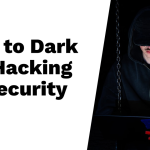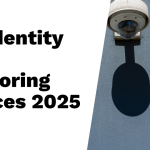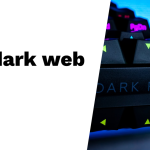Understanding cybersecurity risk management frameworks is crucial for organizations in 2025 as threats evolve and regulations tighten. These frameworks, like NIST CSF 2.0, ISO/IEC 27001, and SOC 2, offer structured guidelines that help manage risks effectively. They’re vital for aligning security efforts and demonstrating commitment to data protection. Emerging trends such as AI-driven tools and Zero Trust architectures are reshaping approaches to security. However, challenges like limited budgets and skill shortages hinder adoption. To overcome this, organizations should prioritize continuous risk assessments and invest in training while leveraging automation to improve efficiency. Adapting proactive measures will enhance resilience against cyber threats.
Table of Contents
- Understanding Cybersecurity Risk Management Frameworks
- Key Cybersecurity Frameworks for 2025
- Emerging Cybersecurity Trends in 2025
- Challenges in Cybersecurity Framework Adoption
- Practical Recommendations for Organizations
- The Future of Cybersecurity Risk Management
- Frequently Asked Questions
1. Understanding Cybersecurity Risk Management Frameworks

cybersecurity risk management frameworks play a vital role in helping organizations systematically manage and reduce risks associated with cyber threats. By providing structured guidelines, these frameworks enable organizations to align their security efforts and assess their overall security posture effectively. They serve as a common language among all stakeholders, promoting collaboration and understanding across departments. This collective approach ensures that everyone involved is on the same page regarding cybersecurity priorities and strategies.
One of the key benefits of adopting a cybersecurity framework is the ability to assess and improve an organization’s security posture through regular evaluations and updates. This ongoing assessment helps organizations identify weaknesses and vulnerabilities, allowing them to make necessary adjustments and enhancements. Additionally, frameworks facilitate compliance with regulatory requirements, which is increasingly important in today’s landscape of stringent data protection laws. Meeting these requirements not only reduces the risk of penalties but also protects the organization from potential legal issues.
A proactive approach to cybersecurity is another hallmark of effective risk management frameworks. By anticipating and mitigating risks before they escalate into serious incidents, organizations can avoid costly breaches and maintain their operational integrity. Implementing a framework also streamlines security processes, making them more efficient and effective. This efficiency is achieved through a risk-based approach, where resources are prioritized based on the potential threats the organization faces.
Moreover, frameworks serve as benchmarks for measuring cybersecurity maturity over time. They often include guidelines for incident response, ensuring that organizations are well-prepared for potential breaches or attacks. This preparedness not only protects the organization but also enhances its reputation, signaling to clients and partners that the organization takes security seriously. In a world where cyber threats are constantly evolving, understanding and implementing robust cybersecurity risk management frameworks is essential for safeguarding an organization’s assets and maintaining trust with stakeholders.
2. Key Cybersecurity Frameworks for 2025
The NIST Cybersecurity Framework (CSF) 2.0 remains a cornerstone for organizations looking to improve their cybersecurity practices. It guides users through the essential steps of governance, risk management, and resilience. Its six core functions, Identify, Protect, Detect, Respond, Recover, and Govern, help organizations structure their cybersecurity efforts effectively, regardless of size or industry.
ISO/IEC 27001 and 27002 standards are also vital, providing organizations with a systematic approach to managing sensitive information and establishing a solid information security management system (ISMS). Achieving certification in these standards not only demonstrates a commitment to security but also enhances credibility in the marketplace.
For service organizations, the SOC 2 Framework is critical. Developed by the AICPA, it ensures that customer data is handled securely, with rigorous compliance requirements that foster trust between service providers and clients.
The CIS Controls, consisting of 18 specific actions, are designed to be straightforward and actionable. They offer a prioritized approach that makes it easier for organizations to reduce risks and enhance their overall cybersecurity posture.
In addition to these frameworks, regulations like GDPR and HIPAA impose specific requirements for data protection and privacy, particularly for organizations that deal with personal information. Compliance with these regulations is not optional; it is crucial for maintaining legal standing and public trust.
Organizations that process credit card transactions must adhere to the PCI DSS framework, which focuses on securing payment information and protecting against data breaches.
The FAIR (Factor Analysis of Information Risk) model provides a way for organizations to quantify their risks. This quantification aids in making informed decisions about resource allocation and risk management strategies.
COBIT offers a governance framework that aligns IT goals with business objectives, ensuring that cybersecurity efforts support broader organizational aims. Meanwhile, the MITRE ATT&CK framework serves as a comprehensive repository of adversary tactics and techniques, which can significantly enhance an organization’s threat detection and response capabilities.
Finally, as cloud environments continue to grow, the Cloud Security Alliance (CSA) Cloud Controls Matrix provides essential guidelines for securing cloud infrastructures, addressing the unique challenges posed by cloud computing.
| Framework | Description | Key Features |
|---|---|---|
| NIST Cybersecurity Framework (CSF) 2.0 | A comprehensive guide focusing on governance, risk management, and resilience. | Emphasizes six core functions: Identify, Protect, Detect, Respond, Recover, and Govern. |
| ISO/IEC 27001 & 27002 | International standards for information security management. | Certification demonstrates mature cybersecurity practices and compliance with international standards. |
| SOC 2 Framework | Developed by AICPA for service providers to manage customer data securely. | Includes extensive compliance requirements and auditing processes. |
| CIS Controls | A set of 18 best practices aimed at reducing risk and enhancing resilience. | Provides a prioritized approach to cybersecurity. |
| GDPR & HIPAA | Industry-specific regulations focusing on data protection and privacy. | Mandate strict compliance measures for organizations handling personal data. |
3. Emerging Cybersecurity Trends in 2025
In 2025, the landscape of cybersecurity is evolving rapidly, shaped by several key trends. The integration of AI and machine learning is transforming threat detection, allowing organizations to identify and respond to incidents with greater speed and precision. These technologies enable systems to learn from past attacks, enhancing their ability to predict and mitigate future threats.
Another significant trend is the growing adoption of Zero Trust Architecture. This model shifts away from traditional perimeter defenses, requiring strict verification for every user and device seeking access to organizational resources. It’s a proactive approach that assumes breaches will occur, thus limiting access to only those who truly need it.
Cyber Risk Quantification (CRQ) is becoming essential for organizations to understand the financial implications of their cybersecurity risks. By quantifying risks in monetary terms, businesses can prioritize their security investments more effectively, ensuring that resources are allocated where they are needed most.
Global regulatory compliance is tightening, compelling organizations to adopt more transparent and accountable cybersecurity practices. As governments and regulatory bodies impose stricter requirements, companies must remain vigilant to meet these standards, avoiding penalties and enhancing their reputation.
Ransomware-as-a-Service (RaaS) presents a growing threat, as it lowers the barrier for less skilled attackers to launch sophisticated ransomware campaigns. This trend necessitates more robust defenses, as even small organizations can become targets.
Supply chain security is increasingly in focus, recognizing that vulnerabilities can arise from third-party vendors. Organizations are now compelled to assess and manage risks associated with their supply chains, ensuring that partners adhere to security standards.
The shift to remote work continues to influence cybersecurity strategies, making it critical to secure home networks and remote access points. Organizations must implement stronger protections to accommodate a workforce that is no longer centralized.
As the Internet of Things (IoT) expands, the attack surface grows, requiring new strategies for managing and securing a diverse array of connected devices. This proliferation of IoT devices introduces unique challenges that cybersecurity frameworks must address.
Lastly, cybersecurity insurance is gaining traction, prompting organizations to adopt better practices to qualify for coverage. As insurers look for evidence of robust security measures, businesses are incentivized to enhance their cybersecurity postures.
These trends highlight the dynamic nature of cybersecurity in 2025, urging organizations to adapt and evolve their strategies to effectively manage emerging risks.
4. Challenges in Cybersecurity Framework Adoption
Adopting cybersecurity frameworks comes with several challenges that organizations need to navigate. One significant hurdle is limited budgets, which often restrict the ability to invest in necessary security technologies and processes. For instance, small and medium-sized enterprises may find it difficult to allocate sufficient funds for comprehensive security measures, leading to inadequate protection against evolving threats.
Another pressing issue is the shortage of skilled cybersecurity professionals. Many organizations struggle to find qualified individuals who can effectively implement and manage these frameworks. This talent gap can hinder the proper execution of security protocols, leaving organizations vulnerable to attacks.
Additionally, legacy systems present serious integration challenges. Many companies still rely on outdated infrastructure that complicates the deployment of modern security solutions. This can create a fragmented security posture, where new initiatives do not align with existing technology.
Cultural resistance within organizations can also slow down the adoption of new security measures. Employees may be hesitant to change established processes, which can lead to delays in implementing necessary protocols. This resistance is often compounded by a lack of awareness among key stakeholders about the benefits of these frameworks, resulting in hesitance to commit resources.
The complexity of various frameworks can overwhelm organizations, leading to improper implementation or outright abandonment. Many frameworks require a deep understanding of cybersecurity principles, and without the right expertise, organizations may misinterpret guidelines. Regulatory changes can add to this confusion, as organizations may struggle to keep up with compliance requirements that evolve alongside the frameworks.
Inadequate leadership support can stall cybersecurity initiatives, diminishing their chances for successful implementation. Without a clear commitment from top management, efforts can lose momentum. Furthermore, siloed departments may not collaborate effectively, hindering a unified approach to cybersecurity across the organization.
Lastly, the rapidly evolving threat landscape can create hesitation in committing to a specific framework, as organizations may fear that their chosen approach will soon become outdated. This uncertainty can lead to procrastination in adopting essential security measures, putting them at greater risk.
- Limited budgets often restrict organizations from investing in necessary security technologies and processes.
- The shortage of skilled cybersecurity professionals makes it difficult for organizations to implement frameworks effectively.
- Legacy systems pose significant integration challenges, complicating the deployment of modern security solutions.
- Cultural resistance within organizations can slow down the adoption of new security measures and protocols.
- Lack of awareness about the benefits of frameworks can lead to hesitance in adoption among key stakeholders.
- Complexity of frameworks can overwhelm organizations, leading to improper implementation or abandonment.
- Regulatory changes can create confusion about compliance requirements, hindering framework adoption.
- Inadequate leadership support can stall cybersecurity initiatives, reducing the likelihood of successful implementation.
- Siloed departments may not collaborate effectively, preventing a unified approach to cybersecurity.
- Rapidly evolving threat landscapes can lead organizations to hesitate in committing to a specific framework.
5. Practical Recommendations for Organizations
Organizations must prioritize continuous risk assessments to identify vulnerabilities and adapt to evolving threats. Regular evaluations not only help pinpoint weaknesses but also ensure that security measures remain effective over time. Additionally, investing in continuous employee training and awareness programs is essential. By fostering a culture of cybersecurity, employees become the first line of defense against potential attacks.
Engaging in threat intelligence sharing with industry peers can significantly enhance situational awareness. This collaboration allows organizations to learn from each other’s experiences and improve their response strategies. Furthermore, utilizing automation tools can streamline security operations, reducing the burden on human resources and minimizing the potential for human error.
Developing and rigorously testing incident response plans is crucial. These plans prepare organizations for potential cyber incidents, ensuring a swift and efficient response when attacks occur. Establishing a dedicated cybersecurity team can further bolster focus and accountability in managing security measures. Investing in advanced security technologies enables organizations to stay ahead of increasingly sophisticated threats.
Creating clear policies and procedures for data handling and incident reporting is vital. These guidelines enhance the overall security posture and ensure compliance with industry regulations. Regularly reviewing and updating frameworks guarantees alignment with the latest security standards and best practices. Finally, engaging with external cybersecurity consultants can provide invaluable insights and support in implementing and refining risk management frameworks.
6. The Future of Cybersecurity Risk Management
As we look towards 2025, the landscape of cybersecurity risk management is poised for significant transformation. One notable shift will be the integration of cybersecurity with overall enterprise risk management, allowing organizations to view security through a broader lens. This holistic approach will enable businesses to better align their security practices with organizational goals and risk appetites.
Artificial intelligence will play a pivotal role in this evolution, with companies increasingly harnessing AI capabilities to predict and respond to threats more effectively. Traditional security practices will be enhanced as AI tools automate threat detection and analysis, making it easier for security teams to manage their workloads.
Collaboration will also become essential, as industries come together to address cross-sector cybersecurity challenges. By sharing best practices and insights, organizations can create a more resilient ecosystem that better withstands cyber threats. The role of the Chief Information Security Officer (CISO) will evolve alongside these changes, moving from a primarily technical focus to a more strategic one, where they will be involved in broader business discussions.
Furthermore, cybersecurity will increasingly be integrated into business continuity planning. Organizations will recognize the need for resilience in the face of disruptions, ensuring that their cybersecurity measures are robust enough to support ongoing operations. Balancing user experience with security will also be a priority, as companies strive to create secure yet accessible environments for their customers and employees.
The rise of quantum computing could prompt a significant reevaluation of encryption standards, compelling organizations to develop new security measures to protect sensitive data. Additionally, sustainability practices will influence cybersecurity strategies, as businesses seek to address their environmental impacts while enhancing their security posture.
Global cooperation will be vital in the fight against cybercrime, with governments and organizations working together to establish norms and standards that can effectively combat these threats. Finally, as organizations recognize cybersecurity as a strategic business imperative rather than just a cost, investment in this area will be viewed as essential for growth and trust.
Frequently Asked Questions
1. What is a cybersecurity risk management framework?
A cybersecurity risk management framework is a structured approach that businesses use to identify, assess, and manage cybersecurity risks effectively.
2. Why is it important to have a cybersecurity risk management framework?
Having a cybersecurity risk management framework helps organizations protect their sensitive information, comply with laws, and maintain customer trust by managing risks systematically.
3. What are common frameworks used in cybersecurity risk management?
Some common frameworks include NIST Cybersecurity Framework, ISO 27001, and COBIT, each offering guidelines and best practices to help organizations strengthen their security posture.
4. How do I choose the right cybersecurity risk management framework for my organization?
To choose the right framework, consider factors like your organization’s size, industry, regulatory requirements, and specific cybersecurity needs to find a suitable approach.
5. What are the main steps in implementing a cybersecurity risk management framework?
The main steps include identifying assets, assessing risks, implementing security measures, monitoring for threats, and regularly reviewing and updating the framework to adapt to new risks.
TL;DR In 2025, cybersecurity risk management frameworks are crucial for organizations to effectively tackle evolving threats. Key frameworks include NIST CSF 2.0, ISO/IEC 27001, and SOC 2, focusing on risk management and compliance. Emerging trends highlight the growing role of AI, zero trust architecture, and the need for enhanced supply chain security. Organizations face challenges like budget constraints, skill shortages, and resistance to change. Practical recommendations include continuous risk assessments, employee training, and developing incident response plans. By adopting these frameworks and strategies, organizations can strengthen their defenses and maintain stakeholder trust.





